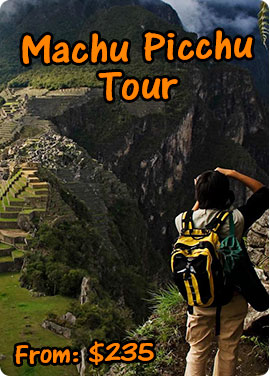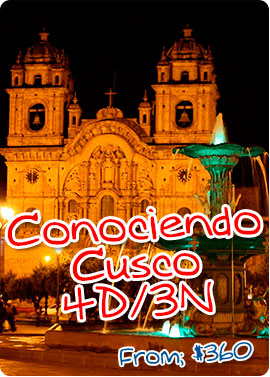Description of the Set:
Maras:
It is a typically Hispanic population, with streets in a straight line, a large colonial plaza and a lot of constructions of houses, many of which even coats of arms can be seen in the doorposts.
According to the news they bring us the chroniclers, following the departure of the tribes (four) of the Ayar the of Tamputoqo sector and other ethnic groups, including ethnic group or tribe of the Maras who migrated until it was possession in this sector; according equally to chronic, there are two chances on the determinative of this town: the first, for religious, ie serious salt their totemic element and the second would be for reasons of work and economy, that is because they were as basic sustenance from work on the exploitation of the salt mines that exist in this area, an element that would be the basic and essential product of their material production contribution for the state to perform redistribution of products. There are, today, a number of people who claim that it was this ethnic group was the one that built the great terraces of Moray.
Moray:
The terraces of Moray are composed or formed of four units or sectors are:
First unit called: Ñustaq Hisp’anan:
Group that called the first amphitheater, is a set of small dimensions. Thus the diameter of the bottom plane is 24, 30 m, the wall heights vary from 1.70 to 2.10 m, and the width of the terraces is 6 to 8 m. on the walls there are a lytic cantilevered slabs, which are stands of intercommunication between terraces. Then, moving a safe distance, we found a number of platforms (four to six), some of which follow the contour lines, but one of them has a geometric almost triangular shape; platforms of these terraces have a dimension of approximately 12 to 14 meters.
Second Unit Dubbed: Muyu Uray:
This architectural drawing is made of a depression that was then occurring him worked a circular shape, the terraces were developed in this depression in the ground, adopting the circular shape, which gives them a very special conformation; from the horizon level until the last platform, this depression has approximately 150 to 170 m. depth which gives a very peculiar appearance, like an amphitheater, hence the erroneous judgment given to these pre-Hispanic constructions. The type of facings is isogonals characteristics (also called cell); this succession of terraces has a conical shape being decreasing them until the last platform is the smallest and measures 34 m. in circumference and an approximate width of 8 m.
Several sections of walls of the platforms have collapsed due to weather and other climatic factors, thus being being restored; as in the platforms of P’isaq be seen on the walls • the presence of a cantilevered stone slabs that are the stands of communication between the terraces.
About the height of the seventh platform retains a series of terraces (seven), which have a U-shape with a length of 60 m. 30 m. wide; All-set of platforms you can see a complex system of water distribution channels, which measure 12 by 8 cm. the feed water pipes for this system, is in Marka Wañuy hill and is in poor condition.
Third unit called: Juchuy Muyuq:
Located north and a short distance from the previous one. It is a succession of seven terraces or circular platforms. The lower platform has a diameter of 39 m; on these platforms, the presence of a series of channels and cantilevered steps as in the other aforementioned units shown. This unit is in very poor condition.
Dubbed Fourth Unit: UNAY Muyuq:
Located north and a short distance from the previous one. It consists of seven platforms or overlapping terraces. The first (bottom) has a diameter of 25, 50 meters. These platforms are raised successively in circular shape, but some of them have fragments of walls have disappeared by the action of various factors that threaten the preservation of monuments.



